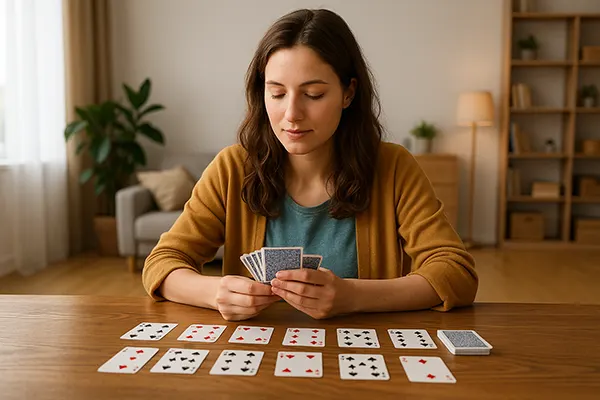
Not everyone recharges through parties, group activities, or constant social interaction. For many introverts, joy is found in solitude, personal discovery, and calm moments away from the crowd. This article offers a practical collection of relaxing solo activities tailored for introverts — perfect for reclaiming your peace without the anxiety of missing out. Whether you enjoy walking under city lights or diving into quiet creative hobbies, there’s plenty to explore on your own terms.
Evening Walks and Silent Observation
Night-time walks offer a unique kind of tranquillity that introverts often crave. As the world slows down, streets become less crowded and more peaceful. The soft ambient lighting and cooler temperatures provide a comforting environment for self-reflection and low-stimulus enjoyment.
These walks can take many forms — a short route around your block, a quiet trail through a local park, or simply observing the shifting shadows of buildings. The absence of noise and activity helps to reset your internal pace, allowing thoughts to settle and creativity to resurface naturally.
Some people bring music or ambient soundtracks; others enjoy the raw soundscape of the night — distant footsteps, wind rustling through leaves, or occasional city sounds. It’s a simple, accessible habit that prioritises calm over chaos.
Street Photography as Personal Exploration
Exploring your surroundings through a camera lens is a quiet, contemplative way to stay present. Introverts often excel in photography because they’re observant by nature — they spot moments others miss. A broken window, soft reflections in puddles, or forgotten staircases can become the subject of compelling visual stories.
You don’t need expensive gear. A smartphone with manual settings is enough to begin capturing street textures, shadows, and symmetry. The act of looking for these images sharpens your sense of place and often leads to discovering previously unnoticed corners.
Many photographers use these solo ‘photo walks’ as a form of journaling. By collecting quiet images over time, they create a personal archive of experience — a visual dialogue between themselves and the city they live in.
Solo Games and Independent Play
Modern board games aren’t just for groups. A wide range of strategic, story-driven, or logic-based games now offer solo modes. These games are not only relaxing but also mentally stimulating — they help introverts focus and unwind in structured ways without needing to interact socially.
Titles like “Calico,” “Obsession,” and “Viticulture” are examples of games that blend thematic immersion with gentle strategy. Many include rich narratives, tactile components, and satisfying decision-making loops. Solo gaming provides enjoyment at your own pace — no time pressure, no competition, just the pleasure of the process.
Creating a dedicated game space at home — a cosy desk, soft lighting, maybe a cup of tea — enhances the ritual. Replaying games or discovering new mechanics allows for mental engagement and a sense of mastery without external noise.
Mindful Hobbies and Skill Learning
Engaging in creative activities like sketching, origami, or building puzzles can be both grounding and rewarding. These hobbies are perfect for introverts who prefer individual progress over group dynamics. They develop patience, focus, and fine motor skills, all while offering a calm sensory experience.
Online courses and tutorial series are ideal tools for learning at your own rhythm. Websites like Skillshare or Udemy offer bite-sized lessons in illustration, coding, journaling, and more. You’re not pressured to keep up — you’re free to pause, rewind, and experiment on your terms.
The value in these hobbies isn’t in showing off a finished product but in the process of doing. Introverts tend to find comfort in repetition, detail, and structure — traits that these pastimes nurture beautifully.

Slow Media and Digital Escapism
Not all screen time is draining. With the right curation, digital content can be rejuvenating rather than exhausting. Long-form podcasts, slow cinema, or minimalistic video essays offer introverts an opportunity to absorb new ideas without overstimulation.
Podcast marathons are especially popular among solo listeners. Shows like “The Daily Stoic,” “Calm It Down,” or “You’re Wrong About” combine calm narration with informative or reflective content. You can listen while tidying, walking, or simply lying down — there are no visual demands, only soft auditory focus.
Meanwhile, streaming platforms now feature entire collections of ambient videos, nature documentaries, or lo-fi storytelling. These media forms honour the desire for quiet, depth, and time to think — making them ideal companions for introverted evenings.
Digital Journaling and Thought Organization
Writing remains one of the most introvert-friendly pastimes. Digital journaling apps like Obsidian, Notion, or Journey help structure thoughts, emotions, and creative ideas into personal archives. The interface is quiet, the pacing is self-controlled, and there’s no audience — just you and the page.
You can use prompts or freewriting to explore your emotions, goals, or even document everyday observations. Over time, these entries build a personal map of your inner world — something many introverts value as part of their self-awareness journey.
This practice also improves memory and clarity. By turning passing thoughts into written form, you give them space and weight. Introverts often find this process empowering, especially when the outside world feels too chaotic to process in real time.